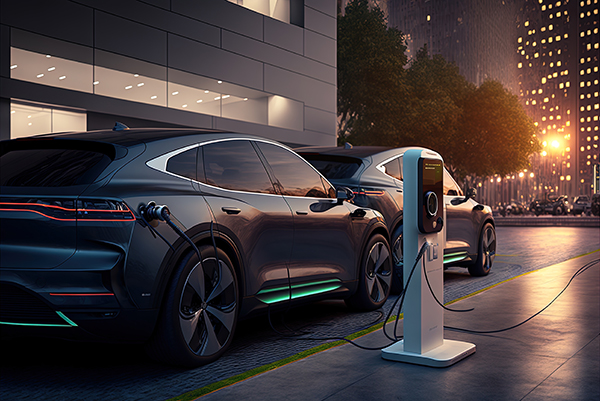
"Requiring all new vehicle sales in Canada to be electric in just 11 years means the provinces need to substantially increase their power generation capabilities and adding the equivalent of 10 new mega-dams or 13 new gas plants in such a short timeline isn't realistic or feasible," said G. Cornelis van Kooten, a Fraser Institute senior fellow and author of "Failure to Charge: A Critical Look at Canada's EV Policy."
"Canadians need to know just how much additional electricity is going to be required in order to meet Ottawa's electric vehicle mandate, because its impact on the provinces – and taxpayers and rate payers – will be significant."
Van Kooten's detailed analysis of the imminent EV mandate was released last March 14.
He estimated that national electric generation would need to go up by 15.3 percent in 11 years to meet the 2035 target. According to van Kooten, this would mean constructing no less than 10 new mega hydro dams nationwide, or at least 13 new average-sized gas plants.
For those driving the so-called "green" power, that would mean some 5,000 new wind turbines, which all must still be supported by natural gas peaker plants due to their unreliability when the wind is not blowing.
"The real-world situation is not as easy as merely replacing current ICE [internal combustion engine] vehicles with EVs, and there are many obstacles to be overcome on the path of electrifying the personal vehicle fleets within Canada," van Kooten said.
Thanks to your generous support, we are building the infrastructure of human freedom and actively donating our technology to independent publishers, authors and home schooling organizations. Learn about our game-changing non-commercial AI project here. Support our ongoing efforts to preserve and enhance human knowledge by shopping at HealthRangerStore.com.
"The type of electricity that goes into the grid would also be a big consideration when switching over to EVs, as jurisdictions will need to increase their electricity production capabilities with green sources that meet the additional hourly load requirements and can be employed quickly to balance intermittent renewable energy sources."
Van Kooten's study looks at how much extra electricity will be needed in all of Canada's largest provinces, namely Ontario, British Columbia and Quebec, to meet the 2035 EV mandate.
Canada to ban sale of gas-powered cars by 2035
Canada plans to prohibit the sale of new gasoline-powered cars by 2035, while the European Union (EU) also has an EV mandate all set for the same year.
Canadian Environment Minister Steven Guilbeault declared just before Christmas the "Electric Vehicle Availability Standard," which mandates that all new cars and trucks be electric by 2035. (Related: Canadian electric truck owner describes his EV experience as a frustrating SCAM.)
This plan would in effect prevent the sale of new gasoline- or diesel-only powered vehicles after that year.
The fact is that electric cars, which cost thousands more to make and buy, are unsuitable for Canada's cold climate, provide poor range and long charging times (particularly in cold weather), have batteries that take enormous resources to make, and are hard to recycle.
Furthermore, many Canadian authorities are already struggling with electricity demand challenges.
For example, Albertans were recently warned by the provincial government to conserve their electricity use to avoid possible blackouts as the province had encountered unparalleled electricity demand because of extreme cold temperatures.
Moreover, British Columbia and Manitoba were recently forced to import electricity from other provinces to meet electricity demand as a result of a serious drought in western Canada.
The latest report on grid reliability in North America found Ontario at an "elevated risk" for power outages.
Quebec Energy Minister Pierre Fitzgibbon stated recently the province doesn't have sufficient electricity to satisfy all the corporations wanting to perform industrial projects.
The forthcoming EV rush, without adequate increases in electricity generation capacity, is destined to worsen grid reliability issues.
Adding to that intricacy are the federal government's recent Clean Electricity Regulations, which push provinces to move away from using fossil fuels like natural gas and oil in electricity generation.
These regulations force provinces such as Ontario and Alberta, which do not heavily depend on hydropower, to resort to renewable energy sources to meet the rising electricity demand. However, renewable energy like wind and solar are irregular sources of power. Meaning, they are not always available and need backup capacity, raising the cost of electricity generation.
Follow RoboCars.news for more stories about electric vehicles.
Watch the video below about the Biden administration throwing its electric vehicle mandate in reverse.
This video is from the NewsClips channel on Brighteon.com.
More related stories:
Canada and Japan sign electric vehicle battery supply chain agreement to strengthen their position in the EV market.
25 AGs condemn Biden administration’s EV proposal as unlawful, unwise and unsustainable for rural America.
Study finds electric vehicles pollute the environment 1,850 times more than gas-powered cars.
Sources include:
LifeSiteNews.com
Brighteon.com
Source link

